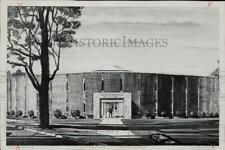
Scientists have been pondering the fundamental creative force behind life on Earth for millennia, and now, thanks to almost a year’s worth of number-crunching on a supercomputer, Rice University physicist and bioengineer Michael Deem thinks he has the answer: a changing environment may organize the structure of genetic information itself.
“Our results suggest that the beautiful, intricate and interrelated structures observed in nature may be the generic result of evolution in a changing environment,” Deem writes in Physical Review Letters. “The existence of such structure need not necessarily rest on intelligent design or the anthropic principle.”
While the vertical transfer of genes (from generation to generation) through sexual reproduction or conjugation is an established principle, HGT is less well understood. HGT allows genes, pieces of genes and collections of genes to move between species, even in cases where vertical transfer is physically impossible.
Though scientists have known about HGT for years, it was thought to be rare and infrequent until sophisticated tools opened the genetic history of many species in the 1990s. Today, HGT is widely accepted as the primary reason for antibiotic drug resistance. Deem believes that HGT played a significant role in human development as well. “Our acquired immune system is a product of horizontal gene transfer and is organized in a modular fashion,” he noted.
Deem’s study found that an organism’s fitness – the likelihood that it and its descendants will survive in a rapidly changing environment – increases as the modularity of its genetic code increases. Interestingly, another finding was that the faster the environment changes, the more modular genetic information becomes.
Because modularity begets complexity, the more modular genetic information becomes, the more complex the web of life becomes. Deem provided the example that while human beings are far more complex than singled-celled yeast, they have only about four times as many genes.
Deem added that the complex nature of multicellular plants and animals derives not only from the genes themselves, but also from the complex regulatory networks that control the production and interaction of the products of genes – proteins – to fulfill multiple roles. This regulatory network is another example of modular organization, he says.
“Modularity and hierarchy are prevalent in biology, from the way atoms are arranged in molecules, molecules into amino acids and amino acids into secondary structures, domains and proteins,” Deem said. “This hierarchy continues with multiprotein complexes, protein regulation pathways, cells, organs, individuals, species and ecosystems. Our research suggests that modularity and hierarchy are prevalent because genetic information self-organizes into increasingly more modular forms. A changing environment and the biochemistry of horizontal gene transfer appear to be part of the source for this fundamental creativity of life.”
Related articles:
Do We Really Understand Gene Transfer?
Designed By Mother Nature
Sex Life Of Bacteria Under The Microscope
Mammalian Cell Self-Organization Replicated In Lab
Researchers Ponder Primordial Broth
Is Evolutionary Development Like Flat-Pack Furniture?
Horizontal Gene Transfer Accelerating Evolution











Comments are closed.